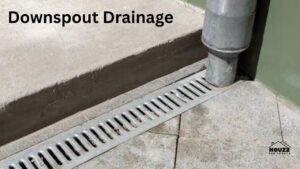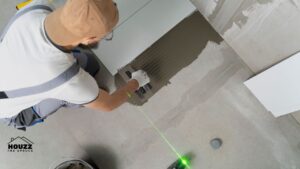Designing and installing a basement window well isn’t just about function—it’s about blending safety, style, and efficiency. A well-planned window well can make your basement brighter, safer, and more inviting. Whether you’re upgrading an old one or adding new window wells for basement egress, proper design and installation will ensure lasting results.
1. Start with the Right Measurements
Before you even pick a material, take accurate measurements of your basement windows.
- Measure the width and height of your window opening.
- Ensure the window well extends at least 3–4 inches beyond each side of the window frame.
- The depth of the window well depends on local building codes and the size of your basement window.
For egress window wells, there’s a key rule: the well must provide at least 9 square feet of floor area, with a minimum projection and width of 36 inches. That space ensures a person can escape easily during emergencies.
2. Choose the Ideal Shape and Design
Window wells come in several designs, each suiting different architectural styles and budgets. Here’s how to choose:
- Rectangular window wells – Simple and functional, perfect for small or standard-sized basement windows.
- Circular or curved window wells – Great for modern homes, adding a softer visual appeal.
- Tiered or terraced designs – Ideal if you want to plant flowers or small shrubs, turning your well into a mini-garden.
- Stone or faux-stone window wells – Offer a natural look that complements rustic and traditional homes.
For homeowners focused on aesthetics, decorative basement window wells are trending—they combine protection and curb appeal in one.
3. Select Durable Materials
The choice of material greatly affects both performance and appearance.
Here are the most common types:
- Galvanized steel – Strong and long-lasting but prone to rust if not coated properly.
- Polyethylene (plastic) – Lightweight, corrosion-resistant, and easy to install.
- Fiberglass – More decorative, available in various textures and colors.
- Concrete – Extremely durable and best for large egress window wells.
Tip: If you live in an area with high moisture or frequent rainfall, consider adding window well liners or a window well drain system for better water control.
4. Drainage Is Everything
A proper drainage system keeps your basement dry and prevents costly water damage.
When installing your window well drain, make sure:
- The bottom of the well has gravel or crushed stone (about 6–8 inches deep) for natural water filtration.
- A drain pipe is connected to your home’s perimeter drainage system or sump pump.
- You regularly check for debris buildup that can block drainage.
Without proper drainage, even the best-designed basement window wells can fill with rainwater and cause flooding.
5. Installation Step-by-Step
If you’re going the DIY route, here’s a simplified process to install a basement window well effectively:
- Excavate the area – Dig out the soil at least 12 inches wider than your chosen window well.
- Level the base – Add a gravel layer for stability and drainage.
- Position the window well – Align it properly against the window frame.
- Mark and drill anchor holes – Use masonry anchors or bolts to secure the well firmly to the foundation wall.
- Backfill carefully – Fill the sides with gravel to promote water flow away from the well.
- Test drainage – Pour water into the well to ensure proper drainage.
Remember: if your well is deep or intended for egress, it’s better to have a professional handle the installation for compliance and safety.
6. Add Accessories for Safety and Comfort
To make your window well functional and secure, consider adding accessories such as:
- Window well covers – Prevent debris, snow, and animals from entering. Clear acrylic covers also allow sunlight to pass through.
- Egress ladders – Mandatory for wells deeper than 44 inches; they ensure a quick escape in emergencies.
- Decorative liners – Improve aesthetics by covering the metal or concrete walls with brick, stone, or wood textures.
- Lighting – Installing LED lights enhances safety and adds charm to your basement view.
Combining these accessories transforms a basic window well into a stylish and efficient part of your home design.
7. Follow Local Building Codes
Every region has building codes that dictate the minimum window well size, depth, and escape accessibility. Before installation, always:
- Check local requirements for egress window wells (especially in bedrooms).
- Verify if permits are needed for excavation or structural alterations.
- Ensure the design meets fire safety and emergency-exit standards.
Staying compliant keeps your home safe and avoids legal hassles during property inspections.
8. Maintenance for Long-Term Performance
After installation, maintenance is key to keeping your basement window well in top shape:
- Clean out leaves, soil, and debris regularly.
- Inspect the drain system twice a year.
- Tighten bolts or re-seal gaps if the well starts shifting.
- Check your window well cover for cracks or damage.
A clean, well-maintained window well extends the lifespan of both the window and your basement’s waterproofing.
9. Aesthetic Enhancements
Who says a window well has to look boring? Try creative design ideas:
- Add potted plants, small stones, or solar lights to make the space visually appealing.
- Paint or decorate the interior walls of the well.
- Install landscape edging or garden borders around the top edge.
These small touches make your basement window well an integral part of your home’s landscaping.
10. Professional vs DIY: Which Is Better?
If you’re handy and have experience, a DIY window well installation can save money. However, for deep egress wells, uneven soil, or drainage complexities, hiring a professional installer is worth every penny. Experts can:
- Ensure perfect alignment and code compliance.
- Handle waterproofing and foundation sealing.
- Offer custom designs and better-quality materials.
Ultimately, professional installation delivers peace of mind—especially when your family’s safety depends on a well-functioning escape route.
Final Thoughts
A well-designed basement window well does more than meet building codes—it enhances comfort, safety, and aesthetics. By following smart design principles, ensuring efficient drainage, and using durable materials, you can transform your dark basement into a bright, safe, and inviting living area.
Whether you choose a simple galvanized model or a custom decorative egress window well, thoughtful design and proper installation will make all the difference.












